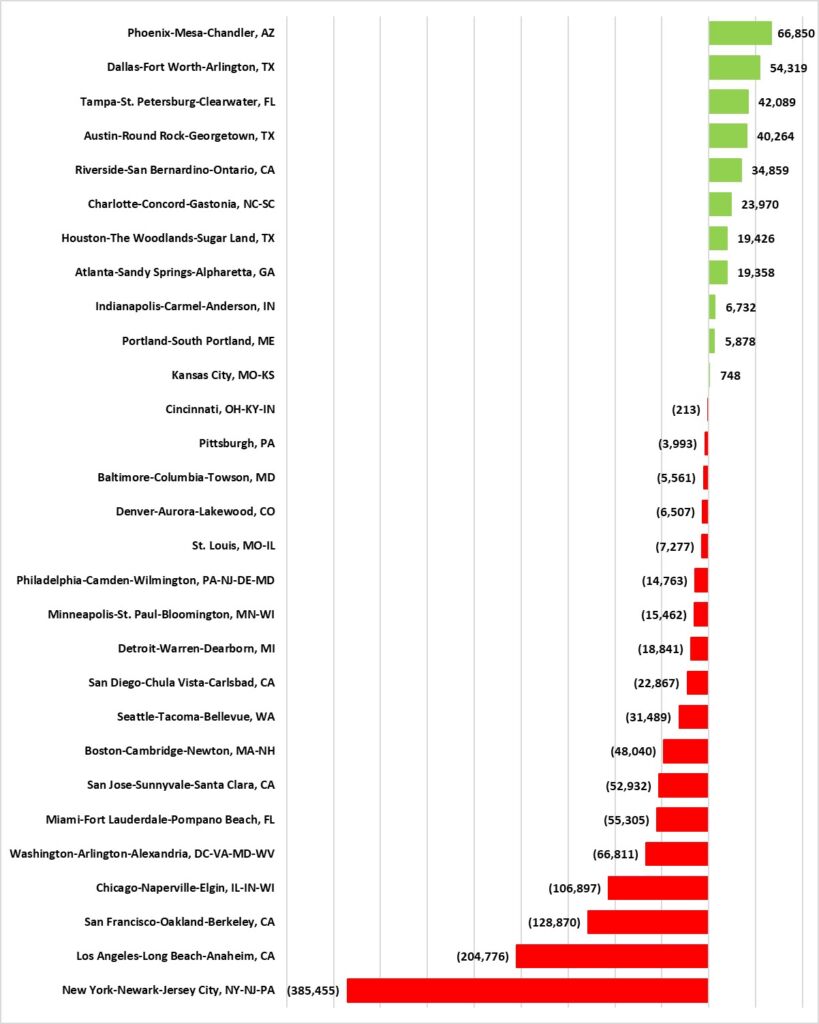Twin Cities lost 15,462 residents to other parts of America in 2021
In 2021, Minnesota’s population grew by just 225 people, losing 13,453 residents to other states. This was Minnesota’s biggest net loss of domestic migrants to other states in at least 30 years.
New Census Bureau data paints a similarly sorry picture when we look at the Twin Cities. In 2021, the Minneapolis-St. Paul-Bloomington Metropolitan Statistical Area (MSA) lost a net of 15,462 residents to other places in the United States, up from a loss of 1,236 the previous year. In fact, the only one of Minnesota’s five MSA’s to gain residents was Duluth.
To put this in context, we can create a peer group to compare the Twin Cities to, comprising the 14 MSAs with a larger Gross Domestic Product (GDP) in 2020 and the 14 with a smaller GDP. As Figure 1 shows, of the eleven MSA out of the 29 which gained residents on net from other parts of the United States in 2021, three were in Texas. By contrast, of the 18 MSAs which lost residents on net to other parts of the United States in 2021, four were in California. The weather doesn’t explain that.
Figure 1: Net domestic migration, 2021

What is behind these patterns? As I argued in our report ‘Taxes and Migration – Minnesotans on the Move to Lower Tax States,’ taxes play a not-insignificant role in people’s decisions as to where to live, work, and invest.
But there is another factor at work here, I think. This data covers the first year of the COVID-19 pandemic. The measures taken to combat this virus differed greatly from state to state and city to city. Both New York and Los Angeles took stringent measures in terms of lockdowns and masking requirements, while Dallas and Tampa (while still being more strict than the rest of their states) have taken a more laissez-faire approach. To the extent that some of these moves have been driven by COVID-19 policy, it would seem that when they are voting with their feet, Americans generally prefer Greg Abbott’s approach to Gavin Newsom’s.